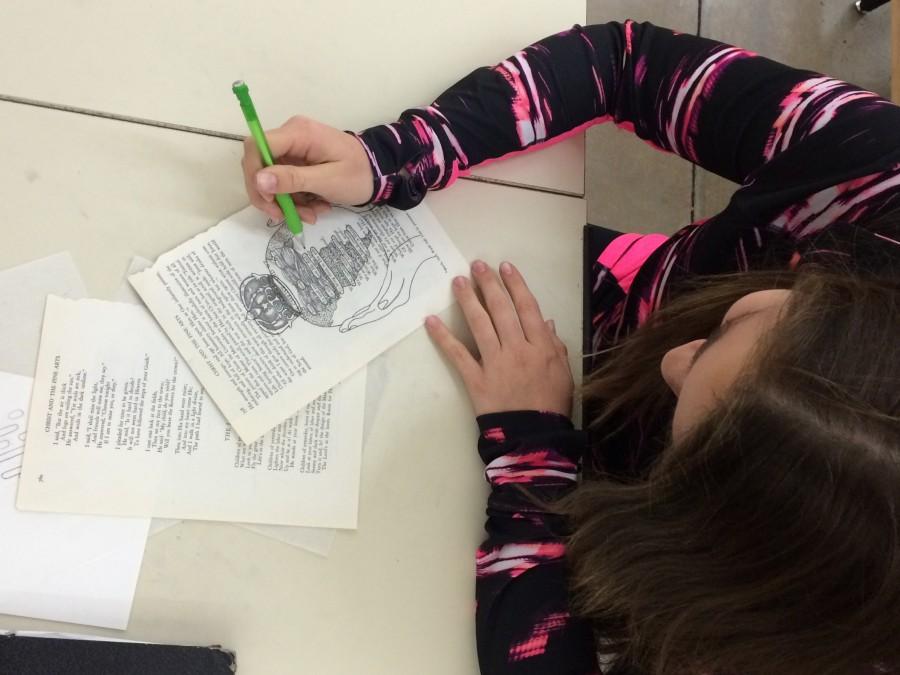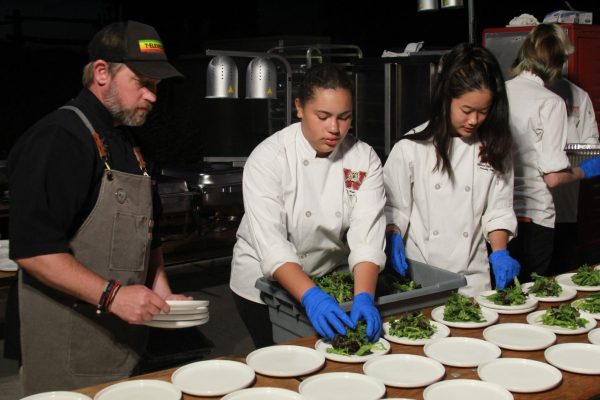Art III students use vintage book pages, glass to create nightlights
With the inspiration of words and the new medium of glass, Art III students have been challenged to create a nightlight with their own piece of poetry, recycled from the words in antique booklets.
“We all have to use our creative touch to pull out specific words and make sure they flow together as a poem. After that we begin to sketch out designs on our transparent paper,” Melissa Lombardo said.
The transparent paper serves as a rough draft to create the design of their nightlight with the words they have chosen from the antique book. This becomes a long process for most students, because they must find words that make a poem, design it to look appealing and make it relevant to the student artist.
“We take an old book page and circle words to create a new poem. It’s challenging to have it follow the design, make sense and [mean] something to you,” Haven Lambrite said.
Students will end up creating multiple rough drafts before finding the perfect one for their rough draft.
“The idea is to create a lot of rough drafts so you can choose the very best idea,” Lambrite said.
After the original artwork is created for their nightlight, the work with the glass begins. Because the students haven’t ever worked with glass before, art teacher Mrs. Deborah Lane conducted a mini physics lesson about the qualities of glass.
“None of them really know the physics of glass, so they have to learn the physics of glass and coefficient of expansion, kind of like how a cookie turns from a piece of dough to a smooth cookie, glass does the same thing,” Lane said.
Using this information students will squish this original artwork between the two glass pieces, creating the glass nightlights. Then, like a cookie, the hard glass will envelop the student’s original artwork and melt in the welding fire.
When the project is finished, Lane will evaluate based on the principles of design.
“They have to demonstrate mastery of most of the elements and principles of design like line, pattern, balance, contour, value and shading,” Lane said.
Other than the basic guidelines and principles, students have artistic freedom. Lombardo finds this freedom in expressing her religion through her antique book page poem.
Lombardo said, “My inspiration was my relationship with God and how he is always by my side, holding me up when I get down.”
by RACHEL MARQUARDT







![On the stage, Daniel Bozinovski and Rachel Treto play their part as Tom and Hannah in the show “The Cast List”. The show was about a group of students who were told about their cast list for the play “Romeo and Juliet.” The Theater I students were in preparation for their first showcase of the year. Students went over their lines during all of their class for the past two months. “[We put in] a lot of rehearsal, practicing lines, making sure you have everything memorized and making sure you are ready to go in and not forget anything,” Nathan Weeks said. Photo by Megan Kubas.](https://www.whitneyupdate.com/wp-content/uploads/2024/05/IMG_4085-600x396.jpg)
